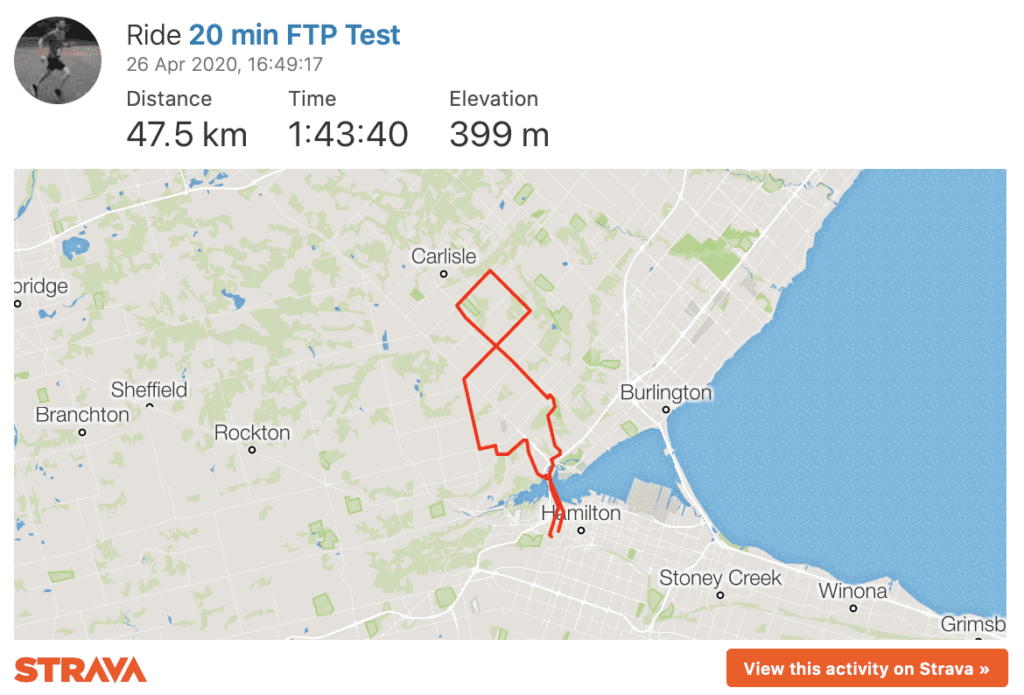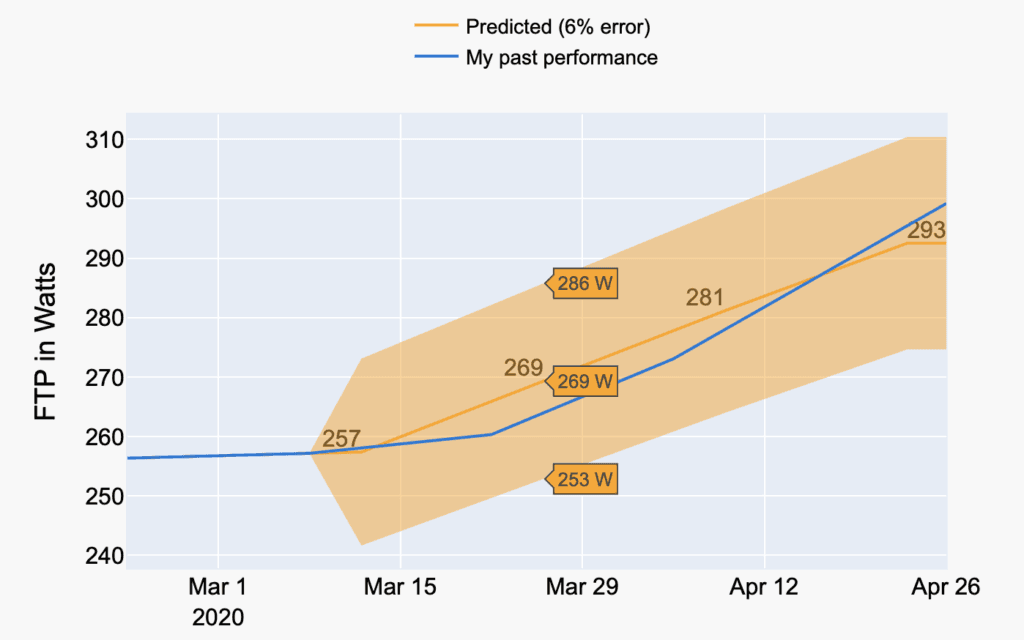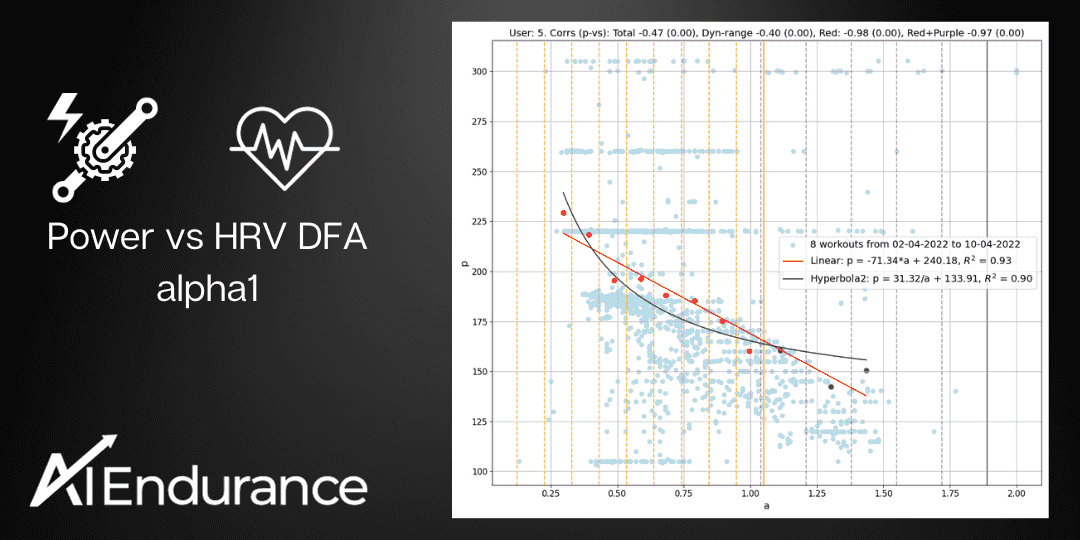
We recap the results of following AI Endurance’s cycling training plan that saw our FTP grow according to AI Endurance’s predictions, following the instructions on how to improve FTP.
We - Dominik and Markus of AI Endurance - have been training for Paris to Ancaster 2020 , a gravel grinder race that was supposed to happen on April 26th 2020 but was cancelled because of Covid-19.
Nevertheless, we stuck to AI Endurance’s 8 week cycling training plan and saw great improvements. If you missed earlier posts about our journey, you can find them here:
Dominik grew his FTP to 283 W in 8 weeks, slightly better than the prediction of 261 W, achieving a new PB with AI Endurance’s individualized training plan. His thoughts:
Markus grew his FTP to 299 W in 8 weeks, also slightly better than AI Endurance’s prediction of 293 W. His thoughts:
Check out Markus’ FTP test on Strava:

Also, see how his FTP improved over time compared to AI Endurance’s predictions:

Don’t waste your time with one-size-fits-all training plans. Use AI Endurance’s predictive data-driven approach instead to improve your FTP and get that PB! Get your own personalized training plan today!

by Stefano Andriolo. We demonstrate a universal relationship between cycling power and DFA alpha 1 from every day workout data that allows accessible and regular tracking of aerobic and anaerobic thresholds without the need of an exercise lab or even a dedicated testing protocol.

If you do not want to use Zwift or other virtual platforms, you can simply execute your AI Endurance cycling workouts by letting your Garmin control your smart trainer. For example, let your Garmin Edge 530 or Forerunner 945 control your Wahoo Kickr trainer. All smart trainers supporting the ANT+ FE-C protocol, including Tacx, are supported.

by Grant Paling. AI Endurance released an integrated chat feature earlier this year. As I’ve been using it now for a few months, I thought I’d write up my experiences.

Stay on top of your goals and support our local businesses and charities at the same time. A virtual cycling challenge that comes as close to a race as possible now that social distancing is crucial in slowing down the spread of COVID-19.